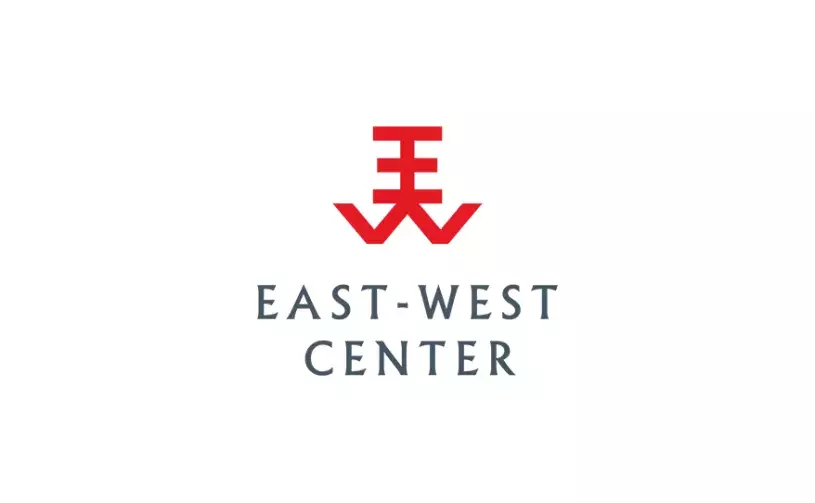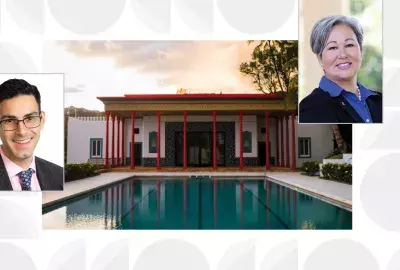Error message

By Charles E. Morrison
HONOLULU (April 12, 2018)—Who has a say about how the Arctic is developed and how its resources are used and protected? The question is complicated because the Arctic is of global significance, but there are only five nations surrounding the Arctic Ocean—Canada, Norway, Russia, Denmark, and the United States—and three more—Sweden, Finland, and Iceland—with some Arctic territory.
Questions about governance of the Arctic were not so important in the past because there was little commercial or strategic interest in the region. Today, that has changed.
Several countries and groups of people have a large stake. The densely populated countries of Northeast Asia are potentially big investors in the Arctic and consumers of Arctic resources, including minerals, fuels, and fish. As major sources of carbon emissions, they are also huge drivers of climate change in the Arctic region. The four million citizens of the Arctic clearly have a large stake in the region, although in the past they had little voice in national or international policies that affected their communities. And finally, scientists have an important role to play in improving knowledge of the physical and social dynamics of the Arctic and communicating that knowledge to policymakers.
Among nations of the North Pacific, three important developments have spurred growing interest in the Arctic. The first is global warming, opening up the prospect of shorter shipping routes between Asia and Europe. The second is rapid economic growth, triggering a huge increase in energy needs and exacerbating the region’s uneasy dependence on the Middle East. The third is new technologies in ship design and in exploration, drilling, and mining equipment, stoking hopes to unlock Arctic sea routes and exploit the region’s untapped energy resources.
Despite a strong and growing interest, however, nations of the North Pacific lacked a platform for dialogue or a mechanism for regional collaboration. Recognizing this need, the East-West Center and the Korea Maritime Institute initiated the annual North Pacific Arctic Conference (NPAC) in 2011, bringing together scientists, policymakers, and community leaders from six North Pacific countries—Canada, China, Japan, the Republic of Korea, Russia, and the United States—along with other stakeholders in the Arctic region. Annual conferences have focused on key issues that are of special interest to North Pacific countries—shipping, natural resources, environmental and community sustainability, and Arctic governance.
Shipping. Twenty years ago, much of the interest in the Arctic stemmed from the prospect of new and shorter shipping routes from Asia to Europe. The route north of Siberia is 40–45 percent shorter than traditional routes through the Suez or Panama Canals, and with rapid climate change, pack ice clogging the route is projected to decline and eventually disappear. To date, however, much of the expanded shipping north of Siberia has been confined within the region, such as hauling construction materials and equipment for the development of Russia’s gas- and oil-rich Yamal Peninsula.
Early projections of expanded shipping through the Arctic now seem unrealistically optimistic. Discussions at NPAC have stressed that the North Sea route will be seasonal and dangerous for years to come, requiring enormous investments in ice-breaking equipment and other infrastructure. Cyclical factors, including lower prices for energy resources and excess cargo capacity, have also significantly dampened the enthusiasm.
The future of Arctic shipping, at least in the near and medium term, is tied to resource development within the region rather than global shipping routes. Yet short-term economic conditions could always change, and in the longer term, transit shipping may become economically viable. Clearly, shipping in the Arctic region—including issues of safety and environmental impact —warrants continued monitoring, and NPAC provides an important venue for these discussions.
Resources. A few years ago, there was a surge of interest in Arctic energy resources, buoyed by high prices and optimistic assessments of the region’s oil and gas reserves. Again, however, the Arctic’s physical realities, global market forces, and even political factors have dampened enthusiasm.
Following the sharp fall in petroleum prices in 2014–2015, several major oil companies terminated their operations in Alaskan leaseholds. At the same time, Western sanctions stemming from Russia’s conflict with the Ukraine limited Russia’s access to the bank financing and advanced technology required for Arctic exploration.
More recently, a picture of great complexity has emerged with no certain future. The 2016 Paris Climate Accord supports the development of natural gas as a carbon fuel that is less polluting than oil or coal. Gas is believed to be abundant in the Arctic, but the high costs of extraction and transport make it less competitive than gas obtained by hydraulic fracturing (“fracking”) in other locations, including the United States and potentially China. Nonetheless, Russia has forged ahead with liquefied natural gas (LNG) production and port facilities in the Yamal Peninsula. In the United States, the Trump Administration is encouraging both on-shore and offshore oil and gas exploration in Alaska.
There are other significant energy and mineral investments, including Canada’s St. Mary iron ore mine on Baffin Island and Norway’s plans to encourage exploration in the Barents Sea. Both these efforts, which have continued in the face of court challenges from environmental groups, illustrate the conflicts and controversial policy choices between growth and environmental objectives, typically with both sides contending that their approach provides more benefit for indigenous communities.
Another Arctic resource is fish. While ocean warming may concentrate fish stocks northward, the impacts on Arctic fisheries are not yet well understood. In the meantime, most countries surrounding the Arctic have been moving to assert their claims over fish stocks, including in the “high seas” beyond their recognized 200-mile exclusive economic zones.
Environmental and community sustainability. Shipping and resource issues tended to dominate earlier NPAC meetings, but in more recent years, environmental concerns and the sustainability of Arctic communities have become major themes. Participants have included more policymakers and more indigenous Arctic citizens.
Climate-change issues clearly illustrate the interdependence of the Arctic with the rest of world. The region contributes very little to the world’s greenhouse gases, but even if global warming is limited to less than 2°C above pre-industrial levels—as aspired to in the Paris Climate Accord—much of the Arctic Ocean is projected to be free of ice by the end of the century.
Climate change and large-scale resource exploitation pose a threat to indigenous communities. In many areas of the Arctic, increased contact with the outside world has already led to loss of traditional lifestyles and high levels of unemployment, social problems, and dependence on subsidies. In recent years, the participation of indigenous people at NPAC has helped project the voices of this important group to an international audience and has increased Asian support for their communities.
Arctic governance. Effective mechanisms are needed to address impacts on fragile Arctic environments, to prevent non-Arctic disputes from disrupting Arctic cooperation, and to strengthen the voices of under-represented stakeholders, including those of indigenous communities.
One primary focus has been on the Arctic Council, the only governing body focusing specifically on the Arctic region. The Arctic Council was created in 1996 as an intergovernmental forum for territorial Arctic states and non-state partners. Canada, Russia, and the United States were original members of the Council (along with Denmark, Finland, Iceland, Norway, and Sweden). China, Japan, and the Republic of Korea gained observer status in 2013. In recent years, NPAC has provided a useful venue for senior Arctic officials to discuss the role and future of the Arctic Council and other Arctic issues in an informal setting.
Over the years, NPAC has served as a forum for practitioners (government officials, industry executives, and indigenous and civil-society leaders) and analysts (scientists, engineers, and other experts) to engage in wide-ranging and innovative discussions. By bringing together a diverse group of participants, NPAC is making an important contribution to the development of the next generation of leaders on Arctic issues.
Charles E. Morrison is a Distinguished Senior Fellow and former President of the East-West Center. He can be reached at [email protected].
Download a PDF version of this Wire article.
##
The East-West Wire is a news, commentary, and analysis service provided by the East-West Center in Honolulu. All or any part of the Wire content may be used by media with attribution to the East-West Center or the person quoted. To receive Wire articles via email, subscribe here. For links to all East-West Center media programs, fellowships and services, see www.eastwestcenter.org/journalists.
The full list of East-West Wires produced by the Research Program is available on the East-West Center website. For more on the East-West Center Research Program, see www.eastwestcenter.org/research.
The East-West Center promotes better relations and understanding among the people and nations of the United States, Asia, and the Pacific through cooperative study, research, and dialogue.
Series editors:
Derek Ferrar
[email protected]
By Charles E. Morrison
HONOLULU (April 12, 2018)—Who has a say about how the Arctic is developed and how its resources are used and protected? The question is complicated because the Arctic is of global significance, but there are only five nations surrounding the Arctic Ocean—Canada, Norway, Russia, Denmark, and the United States—and three more—Sweden, Finland, and Iceland—with some Arctic territory.
Questions about governance of the Arctic were not so important in the past because there was little commercial or strategic interest in the region. Today, that has changed.
Several countries and groups of people have a large stake. The densely populated countries of Northeast Asia are potentially big investors in the Arctic and consumers of Arctic resources, including minerals, fuels, and fish. As major sources of carbon emissions, they are also huge drivers of climate change in the Arctic region. The four million citizens of the Arctic clearly have a large stake in the region, although in the past they had little voice in national or international policies that affected their communities. And finally, scientists have an important role to play in improving knowledge of the physical and social dynamics of the Arctic and communicating that knowledge to policymakers.
Among nations of the North Pacific, three important developments have spurred growing interest in the Arctic. The first is global warming, opening up the prospect of shorter shipping routes between Asia and Europe. The second is rapid economic growth, triggering a huge increase in energy needs and exacerbating the region’s uneasy dependence on the Middle East. The third is new technologies in ship design and in exploration, drilling, and mining equipment, stoking hopes to unlock Arctic sea routes and exploit the region’s untapped energy resources.
Despite a strong and growing interest, however, nations of the North Pacific lacked a platform for dialogue or a mechanism for regional collaboration. Recognizing this need, the East-West Center and the Korea Maritime Institute initiated the annual North Pacific Arctic Conference (NPAC) in 2011, bringing together scientists, policymakers, and community leaders from six North Pacific countries—Canada, China, Japan, the Republic of Korea, Russia, and the United States—along with other stakeholders in the Arctic region. Annual conferences have focused on key issues that are of special interest to North Pacific countries—shipping, natural resources, environmental and community sustainability, and Arctic governance.
Shipping. Twenty years ago, much of the interest in the Arctic stemmed from the prospect of new and shorter shipping routes from Asia to Europe. The route north of Siberia is 40–45 percent shorter than traditional routes through the Suez or Panama Canals, and with rapid climate change, pack ice clogging the route is projected to decline and eventually disappear. To date, however, much of the expanded shipping north of Siberia has been confined within the region, such as hauling construction materials and equipment for the development of Russia’s gas- and oil-rich Yamal Peninsula.
Early projections of expanded shipping through the Arctic now seem unrealistically optimistic. Discussions at NPAC have stressed that the North Sea route will be seasonal and dangerous for years to come, requiring enormous investments in ice-breaking equipment and other infrastructure. Cyclical factors, including lower prices for energy resources and excess cargo capacity, have also significantly dampened the enthusiasm.
The future of Arctic shipping, at least in the near and medium term, is tied to resource development within the region rather than global shipping routes. Yet short-term economic conditions could always change, and in the longer term, transit shipping may become economically viable. Clearly, shipping in the Arctic region—including issues of safety and environmental impact —warrants continued monitoring, and NPAC provides an important venue for these discussions.
Resources. A few years ago, there was a surge of interest in Arctic energy resources, buoyed by high prices and optimistic assessments of the region’s oil and gas reserves. Again, however, the Arctic’s physical realities, global market forces, and even political factors have dampened enthusiasm.
Following the sharp fall in petroleum prices in 2014–2015, several major oil companies terminated their operations in Alaskan leaseholds. At the same time, Western sanctions stemming from Russia’s conflict with the Ukraine limited Russia’s access to the bank financing and advanced technology required for Arctic exploration.
More recently, a picture of great complexity has emerged with no certain future. The 2016 Paris Climate Accord supports the development of natural gas as a carbon fuel that is less polluting than oil or coal. Gas is believed to be abundant in the Arctic, but the high costs of extraction and transport make it less competitive than gas obtained by hydraulic fracturing (“fracking”) in other locations, including the United States and potentially China. Nonetheless, Russia has forged ahead with liquefied natural gas (LNG) production and port facilities in the Yamal Peninsula. In the United States, the Trump Administration is encouraging both on-shore and offshore oil and gas exploration in Alaska.
There are other significant energy and mineral investments, including Canada’s St. Mary iron ore mine on Baffin Island and Norway’s plans to encourage exploration in the Barents Sea. Both these efforts, which have continued in the face of court challenges from environmental groups, illustrate the conflicts and controversial policy choices between growth and environmental objectives, typically with both sides contending that their approach provides more benefit for indigenous communities.
Another Arctic resource is fish. While ocean warming may concentrate fish stocks northward, the impacts on Arctic fisheries are not yet well understood. In the meantime, most countries surrounding the Arctic have been moving to assert their claims over fish stocks, including in the “high seas” beyond their recognized 200-mile exclusive economic zones.
Environmental and community sustainability. Shipping and resource issues tended to dominate earlier NPAC meetings, but in more recent years, environmental concerns and the sustainability of Arctic communities have become major themes. Participants have included more policymakers and more indigenous Arctic citizens.
Climate-change issues clearly illustrate the interdependence of the Arctic with the rest of world. The region contributes very little to the world’s greenhouse gases, but even if global warming is limited to less than 2°C above pre-industrial levels—as aspired to in the Paris Climate Accord—much of the Arctic Ocean is projected to be free of ice by the end of the century.
Climate change and large-scale resource exploitation pose a threat to indigenous communities. In many areas of the Arctic, increased contact with the outside world has already led to loss of traditional lifestyles and high levels of unemployment, social problems, and dependence on subsidies. In recent years, the participation of indigenous people at NPAC has helped project the voices of this important group to an international audience and has increased Asian support for their communities.
Arctic governance. Effective mechanisms are needed to address impacts on fragile Arctic environments, to prevent non-Arctic disputes from disrupting Arctic cooperation, and to strengthen the voices of under-represented stakeholders, including those of indigenous communities.
One primary focus has been on the Arctic Council, the only governing body focusing specifically on the Arctic region. The Arctic Council was created in 1996 as an intergovernmental forum for territorial Arctic states and non-state partners. Canada, Russia, and the United States were original members of the Council (along with Denmark, Finland, Iceland, Norway, and Sweden). China, Japan, and the Republic of Korea gained observer status in 2013. In recent years, NPAC has provided a useful venue for senior Arctic officials to discuss the role and future of the Arctic Council and other Arctic issues in an informal setting.
Over the years, NPAC has served as a forum for practitioners (government officials, industry executives, and indigenous and civil-society leaders) and analysts (scientists, engineers, and other experts) to engage in wide-ranging and innovative discussions. By bringing together a diverse group of participants, NPAC is making an important contribution to the development of the next generation of leaders on Arctic issues.
Charles E. Morrison is a Distinguished Senior Fellow and former President of the East-West Center. He can be reached at [email protected].
Download a PDF version of this Wire article.
##
The East-West Wire is a news, commentary, and analysis service provided by the East-West Center in Honolulu. All or any part of the Wire content may be used by media with attribution to the East-West Center or the person quoted. To receive Wire articles via email, subscribe here. For links to all East-West Center media programs, fellowships and services, see www.eastwestcenter.org/journalists.
The full list of East-West Wires produced by the Research Program is available on the East-West Center website. For more on the East-West Center Research Program, see www.eastwestcenter.org/research.
The East-West Center promotes better relations and understanding among the people and nations of the United States, Asia, and the Pacific through cooperative study, research, and dialogue.
Series editors:
Derek Ferrar
[email protected]
East-West Wire
News, Commentary, and Analysis
The East-West Wire is a news, commentary, and analysis service provided by the East-West Center in Honolulu. Any part or all of the Wire content may be used by media with attribution to the East-West Center or the person quoted. To receive East-West Center Wire media releases via email, subscribe here.
For links to all East-West Center media programs, fellowships and services, see www.eastwestcenter.org/journalists.







